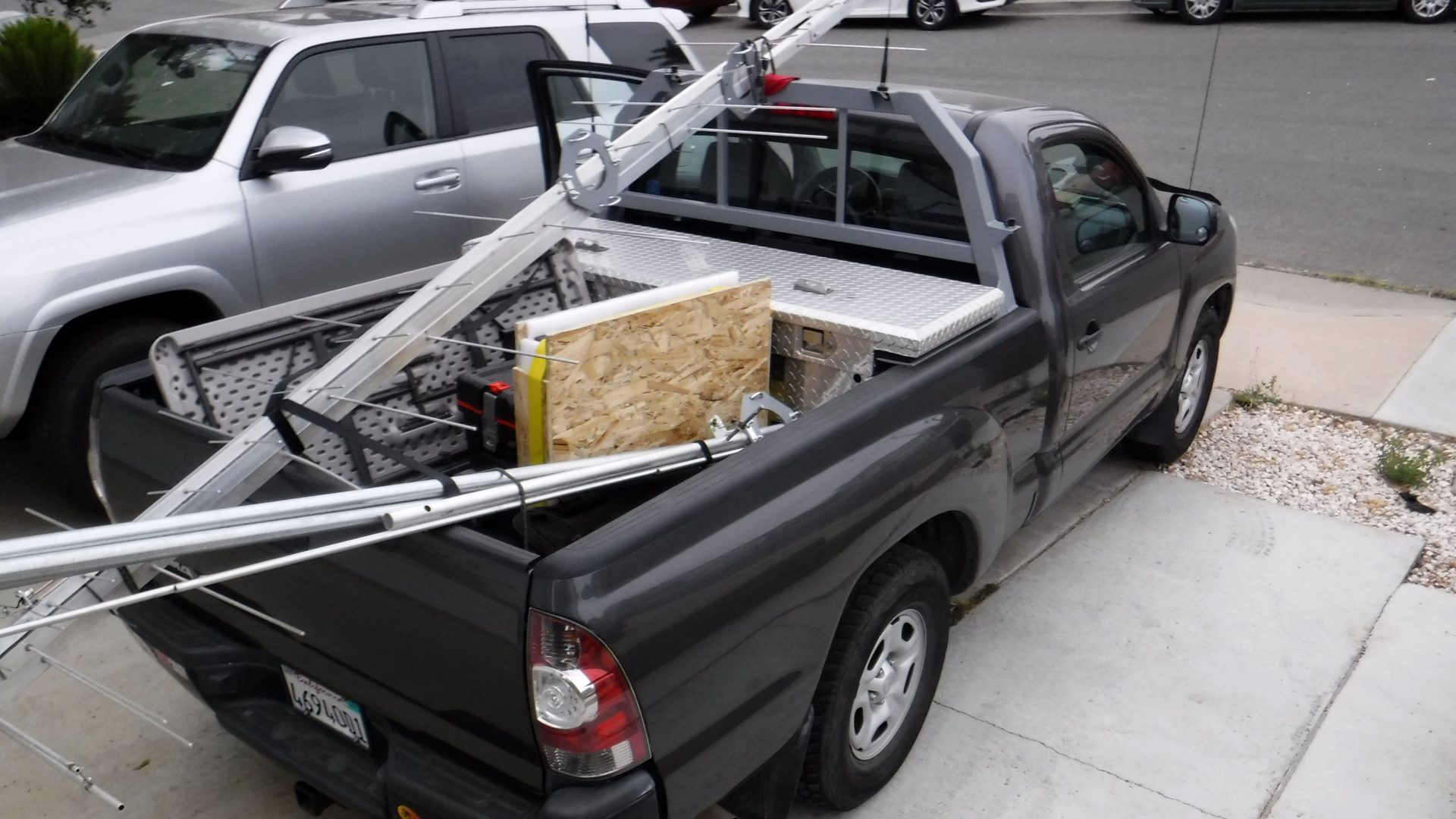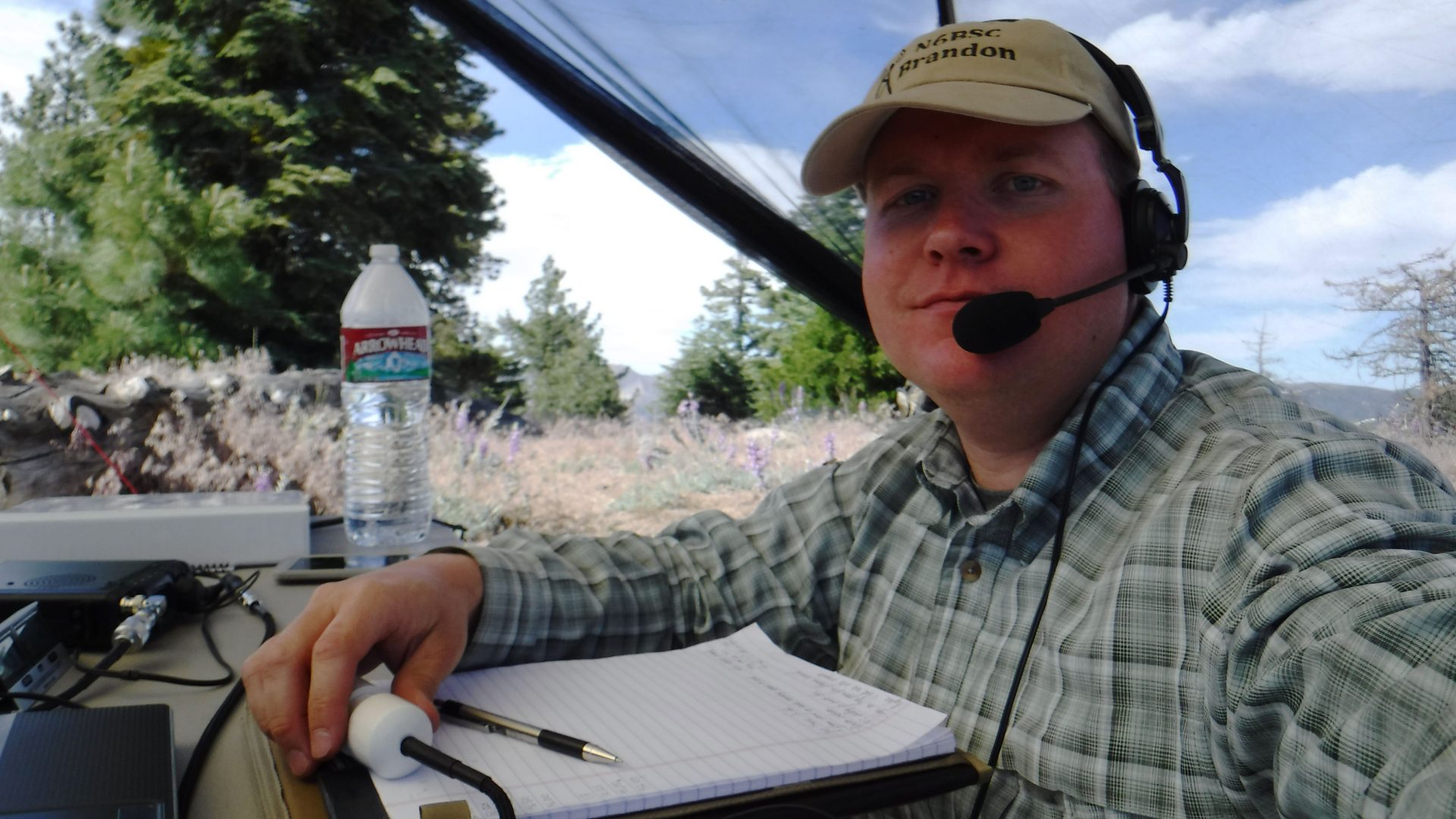After the 2017 January contest I learned a lot: I needed a better mast arrangement, a stronger power supply, and a roomier area from which to operate. With those three things I knew I could be much more competitive on the airwaves. Also, my location had been less than ideal.
Finding a better site was the easy part, although it did take some research. From being active with Summits on the Air I had become familiar with the peaks in the area, and had a good idea which ones were road accessible. Some scouting revealed that Thomas Mountain would be a perfect site from which to operate in the contest.

Before the event I made a number of improvements to the station equipment and was able to properly test everything. I was now ready to go out and try it again!

The drive up to the site was easy in the summer weather. No snow this time!
Next up was to get the towers and antennas arranged. Last time I ran into three key problems:
First, the roadside turnout I used was too small to set up correctly. There was not enough room for the guy lines.
Second, in January the coax runs had given me issues. I kept the runs short to minimize losses on transmit (I run only 5 watts), but that did not give me much wiggle room for locating the station. This time I set up the two towers with one at each corner of my shade structure. This gave each a short run to the radio.
Lastly, and most important, in January the antennas had proved too heavy to lift once they were on the end of a long boom. This time I placed the lightest antenna (6 meters) highest, with the next lightest antenna (70 cm long-boom) below it.
The heavier 2 M long-boom antenna would go on its own, shorter mast. That setup was immensely easier to get lifted up into the air. As a side benefit, the bands for which there would be the highest feed line losses (2 M and 70 cm) were also the closest to the station, keeping coax runs short.

The station setup worked perfectly this time. The antennas were stable, I had some flex left in the coax, and the site had amazing views in all directions. It was also a great contest, with lots of activity.
In these contests six meters is the main band of activity. You usually make contact on six meters initially, and then QSY over to other bands depending on what each operator has available. I went with the flow this time and spent most of my efforts on the 6 M band. This gave me a lot better workflow for getting contacts.
The final weakness I ran into in January was the power supply. The cold weather reduced the voltage of the battery, and having to run the laptop’s AC adapter further drained power. This time around I solved both issues.

To ensure I had plenty of power available I switched to a lithium-iron-phosphate battery from Bioenno. These batteries have an improved chemistry which is more energy dense, lighter, and offers consistent voltage even as the battery discharges. I paired the new battery with a solar panel and charge controller that kept the battery topped up all day long.
As for the laptop, I replaced the battery and also came up with a new way of charging it. Instead of relying on the AC adapter as I did back in January, I made a DC cable with power pole connectors. A simple DC-DC buck converted brought the 13 V battery power up to the 19 volts needed for the laptop. This DC-DC conversion was vastly more efficient in the field than using the lossy DC-AC-DC arrangement from January.

For me, the contest was a total success. I operated all day making contacts to everywhere from Mexico to California City to Santa Barbara. Activity began to wind down in the evening, and so at the end of the day I packed up and headed back down the mountain.
updated 2022-05-15

